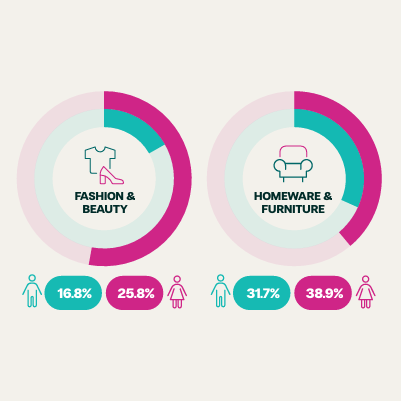Buy Now, Pay Later vs. Short-term Interest-free Credit: why these two models matter

In June 2022, the UK Government published a report outlining some of the findings they had made following a period of consultation in the wake of last year’s Woolard Review.
The consultation highlighted some of the ways retail finance – commonly referred to as ‘Buy Now, Pay Later’ – could be putting consumers at risk.
Following this publication, the government has made its first steps towards implementing regulation for the sector.
One of the ways it has started to approach regulation is by looking at ways to tighten the loophole in the 1974 Consumer Credit Act (CCA), which has historically allowed companies to offer short-term interest-free loans unregulated.
This business practice has been around for many decades, but really came to the fore during the pandemic, when the ecommerce industry started to adopt BNPL en masse. Since then, the sector has been widely accused of putting vulnerable consumers at risk of falling into debt, damaging their credit ratings and causing them severe financial losses.
The government’s consultation recommended regulation for the retail finance sector as an urgent priority. They also noted how any regulation would need to apply to both of the two most common models for retail finance lending, namely Buy Now, Pay Later and Short-term Interest-free Credit.
But what are these two models, and why does the government draw a distinction between them? Let’s explore…
BNPL vs STIFC: how and why does the government define them?
The two main models of retail finance have, up until now, existed as mostly separate entities. This distinction was highlighted in the government’s consultation report, which defined the two models as so:
- BNPL – usually taken out online with consumers having an overarching relationship with a third-party lender, under which multiple low value agreements are made, with little transactional friction as a result.
- STIFC – frequently offered in-store, with consumers taking out a single, higher-value discrete agreement with the credit provider, who may be a third-party lender or the merchant itself. These are a more traditional form of credit, which has operated for many years without raising significant concerns.
Source: HM Treasury, “Regulation of Buy-Now Pay-Later: Response to consultation,” Sections 1.3, 2.5.
In other words, while the two models do the same thing (defer payments for goods and services by lending the full amount up-front and asking the customer to make regular repayments), they tend to be used in different ways.
BNPL is typically offered online for low-ticket purchases, with credit supplied by a third party. STIFC is usually taken out in-store for high-ticket purchases, with credit supplied either by a third party or the retailer themselves.
Of these two models, the government suggested (in section 2.10) that STIFC is the more likely to exist in an already somewhat-regulated state, since it is more commonly provided by lenders and financial institutions who already operate within regulatory frameworks.
For this reason, the government’s consultation implied that STIFC was the less harmful of the two models (section 2.16).
However, as the ecommerce sector continues its exponential growth, the two models are starting to become more alike. BNPL is starting to be used for higher-ticket purchases, while also going omnichannel – appearing not just online, but in-store too. STIFC, meanwhile, is increasingly moving online. Thus, the government noted that the lines between the two models are starting to blur (section 2.11).
For this reason, the government has recommended that any regulatory changes should apply to both models – indeed, that it would be easier to treat the two models as one for the purposes of regulation.
So then, why does this matter? Well, let’s start by understanding a bit of history about the two models, and what makes them different.
Let’s start with the similarities
As was touched on earlier, BNPL and STIFC both operate within an exemption to the Consumer Credit Act (CCA) of 1974. This exemption originally existed specifically for allowing businesses to offer deferred payments for goods and services, so long as:
- a) the loan was short-term, and
- b) the loan charged no interest.
In the pre-internet world of 1974, short-term interest-free credit was useful for things like gym memberships and invoicing. However, in the age of online retail, this exemption has proven woefully inadequate, as it has allowed BNPL providers to enter the market offering their own interpretation of Short-term Interest-free Credit, without having to acquiesce to the authority of the Financial Conduct Authority (FCA) – hence the need for regulation in the sector.
Because the exemption in the CCA is not directly regulated, consumers who use BNPL are not as protected as they would be for other financial products, such as credit cards. The scale at which unregulated BNPL loans are being issued has therefore caused concern.
Until recently, the government has not been concerned about consumer harm for STIFC. But third-party providers have recently started partnering with merchants to offer this type of financing. Merchants pay a fee to the third-party provider who provides the money up-front to the retailer and takes on the credit risk.
STIFC can therefore be further split into two categories – credit offered by a merchant supplying the goods or services, and credit offered by a third-party lender.
No wonder, then, that many commentators have started to treat “Buy Now, Pay Later” as a synonym for any form of retail finance.
And the differences?
While the two models are becoming increasingly similar as each market develops, there are still major differences inherent in their design.
The most pertinent difference is that BNPL providers do not typically require credit checks to provide financing. This is usually due to the small basket sizes of transactions and the tight timeframes imposed on the loan.
A single loan of £50 with a three-month repayment period is much less of a risk than, say, a £10,000 line of credit with a three-year repayment period.
However, without stringent checks, consumers have been free to take out multiple lines of credit under BNPL, often leading them to (sometimes inadvertently) borrow beyond their means.
A lack of information, friction and reporting to credit reference agencies has created fears many BNPL consumers are generating ‘stealth-debt’ – unreported debt across multiple lenders.
With STIFC, however, credit is typically provided by mature lenders such as Tier One banks, who must comply with the FCA’s regulatory frameworks. Because of the rules governing the policies of these lenders, they are not free to offer credit in the same free-and-easy way as BNPL. Even where these lenders have offered unregulated products, they have typically done so in a quasi-regulated fashion, with credit checks and credit reporting as standard.
A divide therefore exists between the unregulated, somewhat risky lending at the BNPL end of the spectrum, and the more responsible, safer lending at the STIFC end.
Banks have been losing ground to BNPL providers. They have been unable to compete fairly in the BNPL market – ironically, because they are unable to offer small, risky loans.
The good news about regulation, then – and the reason we at Divido see it as a good thing – is that it will seek to level the playing field by closing the loophole in the CCA.
It will do so by encompassing BNPL and STIFC within the Financial Conduct Authority’s regulatory powers so that all financial products within the spectrum are controlled.
But if STIFC is different, why is it being regulated?
As the lines between BNPL and STIFC blur, it is becoming increasingly hard to tell which business model a lender fits into.
Therefore, if only BNPL were to be regulated, there is a risk that lenders intent on remaining unregulated would pivot their business models to become more like STIFC.
This would open the door to STIFC being abused in the same way BNPL has – and, if this were to happen, the government would have to go through the regulation process all over again.
Since it looks like full regulation will not come into effect until mid-2023 (meaning the time taken between the initial Woolard Review and measures coming into effect will end up taking more than two years), it is clear that the government must avoid a situation where they need to repeat this lengthy process.
Hence, the most natural course of action is to impose regulation that not only shores up the safety of BNPL, but imposes the same rules upon STIFC too.
The good news is that, since the STIFC industry is already largely self-regulating, regulation should have a relatively minor impact on this side of the sector. Regulation will not stymie this lending practice; rather it will enhance protection and future-proof the sector.
Why does this matter?
Since unregulated BNPL has been used as an umbrella term for all forms of retail finance, STIFC has come under much undue criticism.
Whilst this ignores the many benefits of Short-term Interest-free Credit, it is fair to say that easy access to unregulated credit has the potential to cause consumer harm and should be regulated to prevent this from happening.
Those that will be impacted the most by forthcoming regulatory changes are the companies that have acted less responsibly to date. This mostly applies to the unregulated BNPL market (although many BNPL providers have acted responsibly to date).
For companies that have exploited the lack of regulation imposed by the 1974 CCA, new regulatory measures will force them to change their business practices – which will have a positive impact on their customers and the wider industry.
Meanwhile, those lenders – both in BNPL and STIFC – who are already following regulatory best practice will experience little to no impact.
Divido falls into the latter category. We are proudly responsible by design. As a technology company that works with multiple Tier One lenders to provide a responsible lending platform to merchants who typically offer credit for higher-ticket purchases, we welcome regulation, seeing it as a benefit for the whole industry.
Above all, we hope that regulation will raise the profile of the entire retail finance sector, ending the glut of criticism that has unfairly impacted business models that support, rather than threaten people’s finance choices.
BNPL and STIFC will remain separate business models, even if they continue to be perceived as one and the same. But with regulation forcing the unregulated BNPL sectors to meet the same standards already established by STIFC, every party invested in the sector stands to benefit.
Ultimately, our view is that STIFC will remain the gold standard of retail finance for many years to come. BNPL must now play catch-up in order to meet the same standards that STIFC is designed around.
What do you think? Follow Divido on Twitter and let us know using the hashtag #BNPLvsSTIFC
Divido is the platform partner enabling lenders and merchants to launch their own-brand checkout finance, fast. Consumer journeys are seamless, and can be optimised to convert more customers at every point of sale, online and in-store.
Keen to know more?








